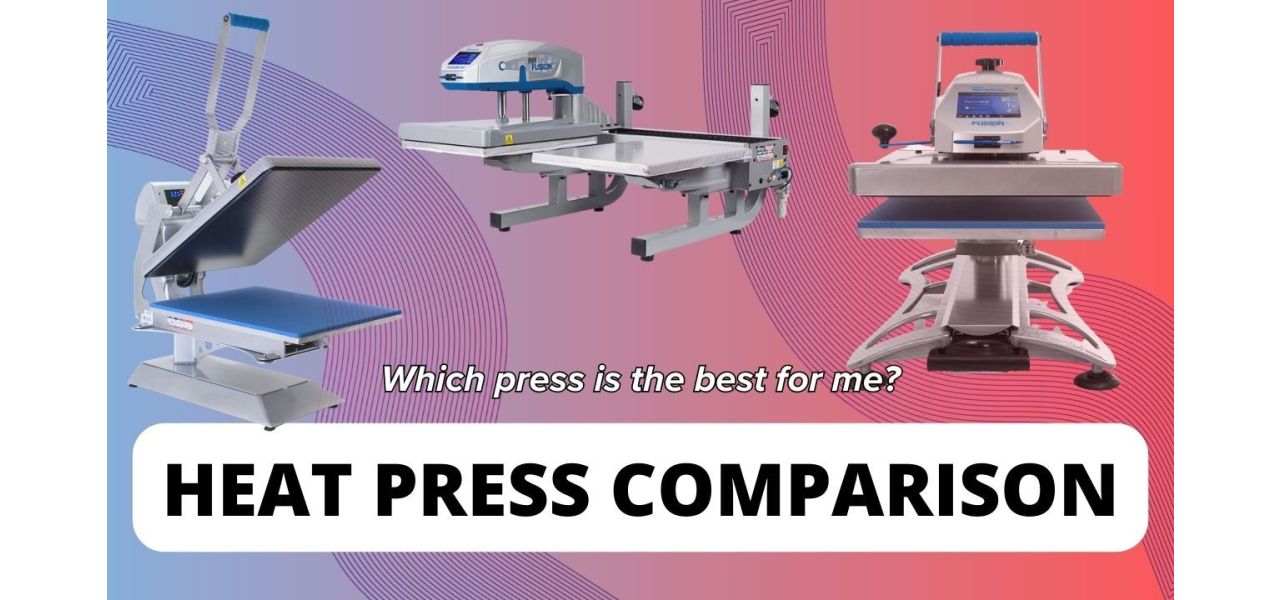Heat Press Comparison: Which press is the best for me?
If you are just starting out in textile printing or your company is growing, choosing the right heat press is an important decision.
Would you rather start with a cheap press?
Or does it make more sense to buy a press that will bring you long-term profits?
In this comparison, I'll show you what you need to consider when buying a heat press, what types of presses there are and how you can tell a good heat press from a bad one.
Content
1. What is a heat press?
2. General purchase criteria
3. Which heat press is best for me?
3.1 Clam presses
3.2 Auto Open presses
3.3 Swing Away and Draw Out presses
3.4 Pneumatic heat presses
4. Conclusion: Which press is the best?
1. What is a heat press?
In textile printing, there are various technical terms, tools and options for decorating textiles so that they can be sold at a profit.
A heat press is one such tool that is required for almost all textile decoration processes. You will also find it under other names, such as transfer press or hot press. All names mean the same thing: A device that applies heat and pressure to a textile in order to print motifs in all imaginable shapes and colors onto the fabric.
For high-quality textile decorations that are also wash-resistant, there is no better tool than the heat press.
2. General purchasing criteria
Regardless of where you buy your press, there are a few points you should always bear in mind.
The first point is the build quality. Make sure that your heat press is made of steel or aluminum. It should be stable and robust so that it can easily withstand the high temperatures you need for your textile decorations.
Every successful print consists of three ingredients: Time, temperature and pressure. Your press should give you control over all three and, above all, it must be accurate.
To achieve this, your press absolutely needs a cast-in heating element. This means that the heating element is not simply built into the top plate, but is actually part of it - so it distributes the heat accurately and evenly over the entire printing surface.
Just as important: the pressure setting of your press. You can use this to adjust how hard it pushes down - depending on whether you are printing a thin shirt or a thick sweater. When buying your heat press, make sure that the pressure setting is centered above the heating plate. Only then can the pressure be evenly distributed over the entire surface.
With low-budget presses, you can often find the pressure setting on the side of the machine. Stay away from these presses! This automatically leads to the “pinch” effect. The pressure only comes from one side - it is too strong there, but too low further away. They cannot be used to finish textiles that are of high enough quality to sell.
Also look for a heat press from a trustworthy manufacturer. This will not only give you peace of mind when buying, but you will also know who to contact in the long term. STAHLS' Europe customer support, for example, is one of the best in the industry and will be happy to answer any questions you may have.
With an investment as important as the purchase of a heat press, good guarantees should always be included. Make sure that these exceed the statutory 2-year minimum guarantee. Our presses, for example, have a 30-year warranty on the heating element and a 5-year warranty on the frame construction. This gives you one of the best guarantees in the industry with a Hotronix® press.
3. Which heat press is best for me?
Next, let's take a look at what types of presses there are - what advantages and disadvantages different models can have and which one is best suited to your company.
3.1 Clam Presses
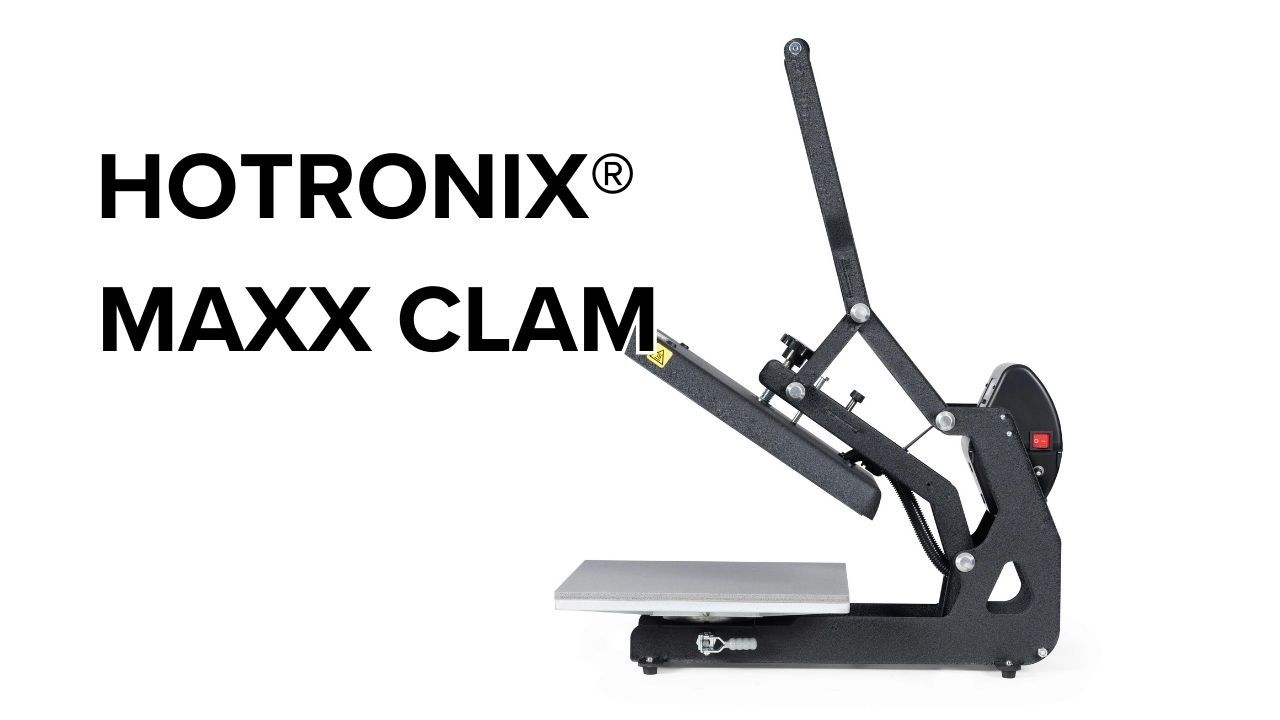

Classic entry-level models usually look like this - clam presses that open and close like a clam.
The functionality and operation of such models is easy to understand. You don't have to familiarize yourself with them for long to produce very good prints. Clam heat presses are also very compact. This is particularly important if you work in a small store or from home.
The Hotronix® MAXX Clam also offers you a digital display on which you can see and change the time and temperature. You can adjust the pressure using the centered pressure adjustment knob.
The disadvantages of a classic Clam press: You always have to open and close it manually. This means you always have to stay on the press if you don't want to risk messing up a pressure setting. You also work directly under the heating plate. You must therefore always be particularly careful when applying and removing textiles to avoid burning your fingers.
In general, the Hotronix® Maxx Clam is a very good entry-level or backup press. With all its functions and guarantees, you have a durable press with a very good price-performance ratio that takes up very little space.
3.2 Auto Open Presses
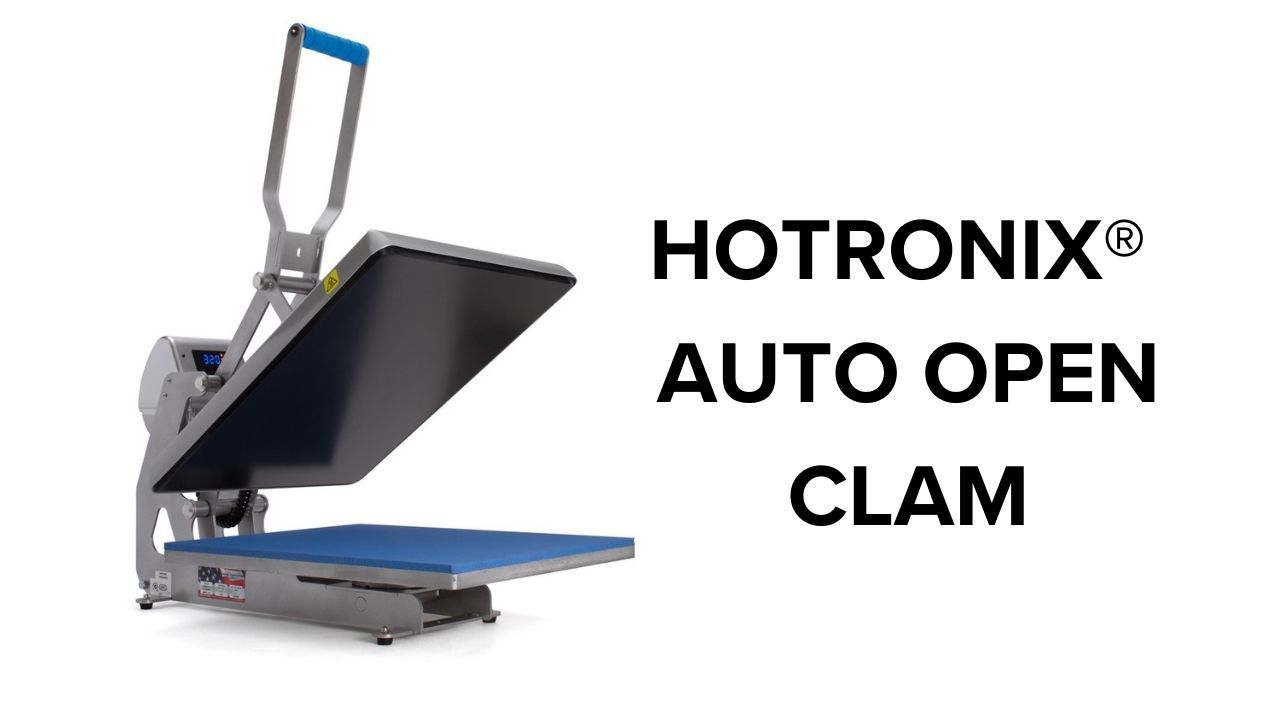

Presses with an auto open function are an upgrade to clam presses. As the name suggests, they open automatically after the time has elapsed, allowing you to multitask. One of the best presses on the market in this category is the Hotronix® Auto Open Clam, which you can see in the picture.
If you are just setting up your business, whether you want to produce high volumes or offer print on demand, I recommend you start with an auto open.
By opening automatically, the press allows you to multitask. It always opens at the right moment, so you don't run the risk of pressing a transfer for too long. A press like this will be with you for a long time. You can also produce high volumes with the Auto Open Clam without any problems. Working on this press for several hours is no problem thanks to the automatic opening system.
3.3 Swing-Away / Draw-Out Presses
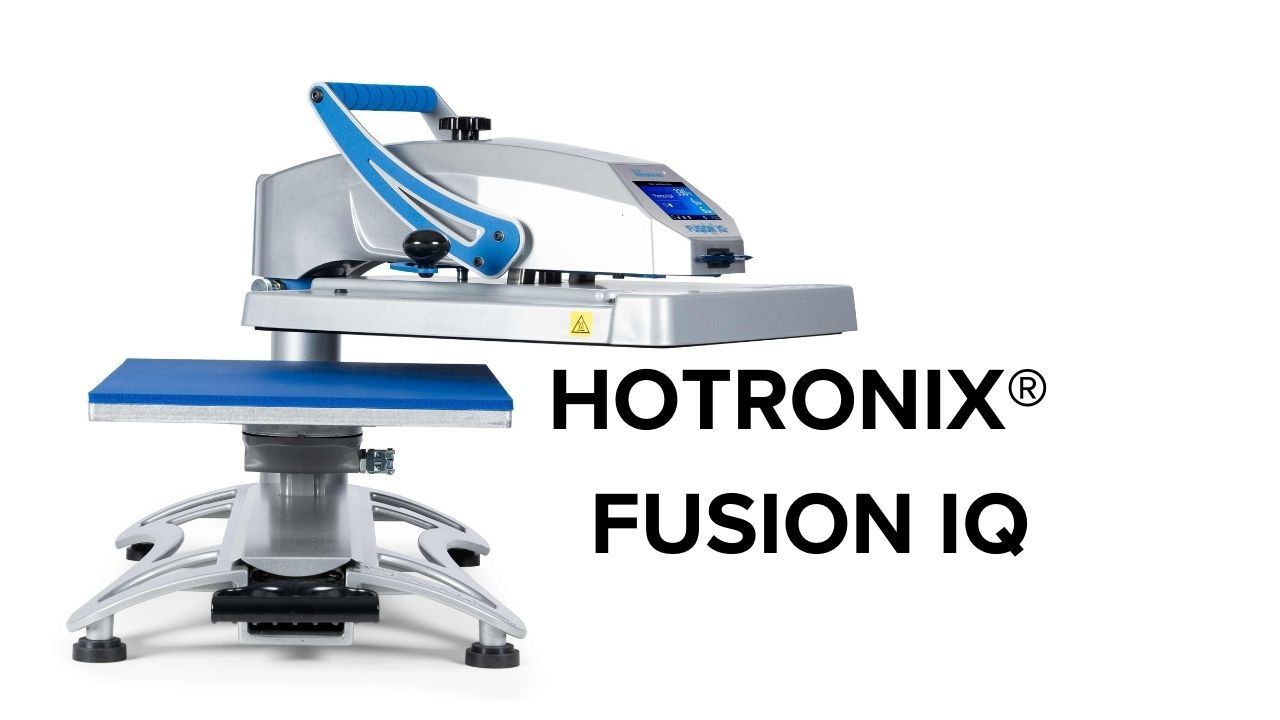

There are also heat presses that do not open and close like a clam. Some allow you to swing the heat plate to the side and others even allow you to pull out the lower platen to have a heat-free work space. The Hotronix® Fusion IQ has both of these functions.
With Swing Away transfer presses, make sure that they are really stable. Many low budget presses tend to tilt or fall straight off the table. With the Fusion, for example, you have a cast aluminum frame that is stable at all times. You also have the option of using a scissor table to give your press a secure stand.
One disadvantage of these presses is that they require more space to swing to the side. That is why the Fusion IQ also offers the possibility to be drawn out to the front, taking up way less space.
A huge advantage of the Fusion over other presses is its IQ control board. You can set all sorts of things here: Timer, temperature, pressure parameters for different materials, you can read the pressure digitally or even set the press to heat up automatically on certain days of the week.
In short: Swing Away and Draw Out presses make textile printing easy for you. The Hotronix® Fusion IQ is one of these presses and among the best manually operated presses available.
3.4 Pneumatic heat presses
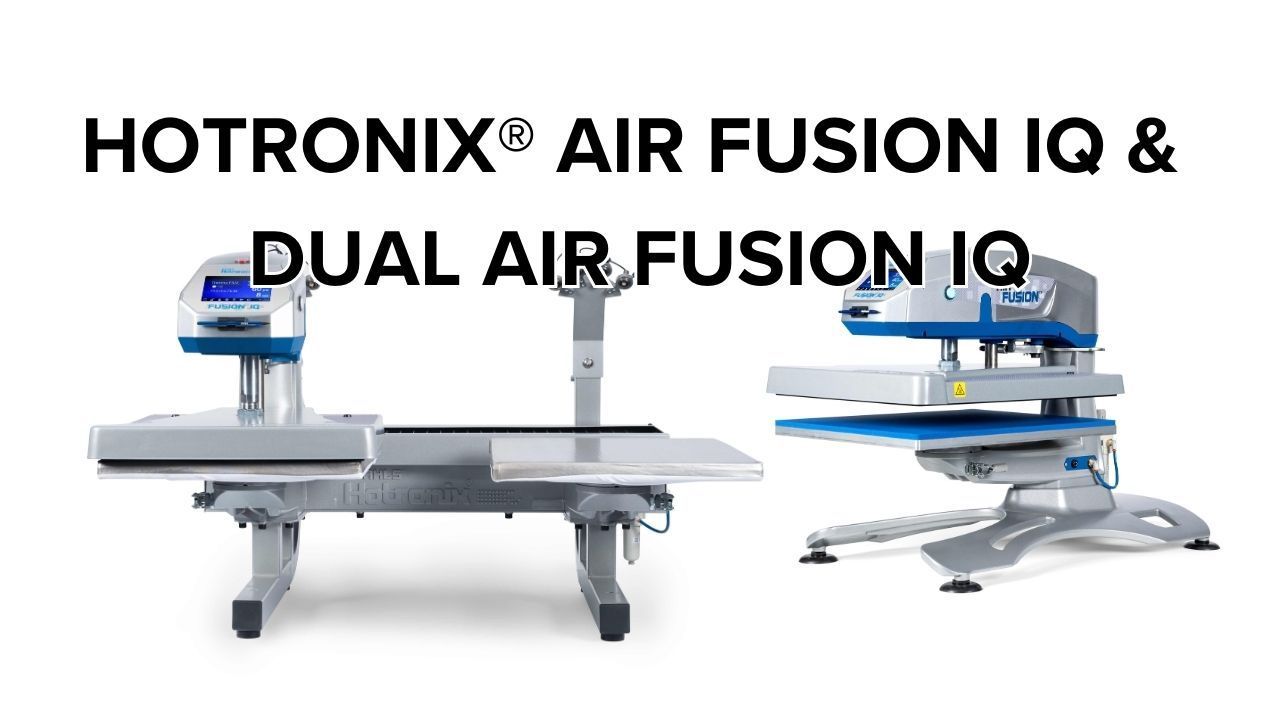

Finally, let's take a look at presses for those who want to handle large volumes. Pneumatic presses, such as our Hotronix® Air Fusion IQ and Dual Air Fusion IQ, do almost everything for you automatically thanks to compressed air.
Both of these transfer presses are connected to a compressor, making the work virtually fully automatic. At the touch of a button, the press closes, recognizes the thickness of the textile and applies the perfect amount of pressure. The press then opens automatically - the head of the Dual Air Fusion moves to the second printing station, where work can continue immediately.
The Air Fusion and especially Dual Air Fusion need a lot of space, must be connected to a compressor and the price also reflects the fact that these are the Cadillacs of transfer presses. But hardly any other press makes your work so much easier than a pneumatic press. Maximum precision, extremely efficient and almost fully automatic - you can work all day on an Air Fusion or Dual Air Fusion, finish hundreds of textiles and still not be exhausted at the end.
4. Conclusion: Which press is best?
Let's summarize once again:
Choosing the right heat press depends on a few things. In general, you should find out about the quality and the manufacturer before you buy a press. Good customer support and warranty conditions should be a given in any case. Then you need to decide on the right type of press - a Clam? An auto clam? Or would you prefer a press that can swing to the side? Perhaps even a pneumatic press would suit your company?
The different presses take up different amounts of space. If you only have a small store or perhaps just a desk, a regular Clam press or an Auto Open Clam is a good way to get started with textile printing.
You should also consider how many textiles you need to print each day. If it's more than 50 textiles per day, I would definitely recommend choosing a semi-automatic or pneumatic press. The more you print, the quicker you will recoup the price of these presses.
If you pay attention to these things when buying your heat press, you really can’t go wrong!

